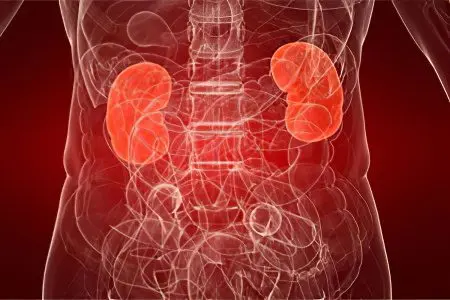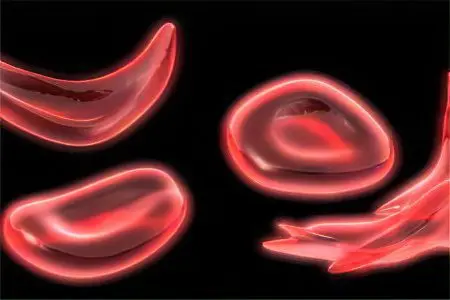Contents

Normocytic normochromic anemia is a large group of anemias that are characterized by certain changes in the blood picture.
To make a diagnosis of normochromic anemia, you will need to donate blood for analysis.
Anemia is a term that reflects a decrease in the level of hemoglobin in the blood. The definition of normochromic anemia includes a color indicator of blood. It characterizes the degree of saturation of red blood cells with hemoglobin, which give red blood cells a characteristic color.
Normally, the color index of blood should vary between 0,8-1,05. The normal size of red blood cells is 7,2 to 8 microns.
Causes of normocytic anemia
Normocytic anemia can be associated with various pathologies, including:
Renal failure and diseases of the endocrine glands.
Cancer of the blood, or the spread of metastases throughout the body.
Aplastic and hemolytic anemia.
Iron-deficiency anemia.
Hemorrhagic anemia against the background of acute bleeding.
Normocytic anemia in renal failure

When the kidneys are unable to cope with their functions, the production of erythropoietin in the body decreases. Chronic renal failure also contributes to the accumulation of uremic toxins in the body, which interfere with the production of erythropoietin. Chronic blood loss and other factors negatively affect the state of the blood. This, in turn, leads to the fact that red blood cells quickly die, their level in the blood decreases.
Hemodialysis also contributes to the development of anemia. This procedure is often prescribed to treat chronic kidney failure.
Blood parameters in normocytic anemia against the background of kidney pathologies:
Normocytic-normochromic anemia.
Reticulocytosis with a slight increase.
Thrombocytopenia.
Decreased erythropoietin levels.
Decrease in the level of leukocytes.
In general, the pathogenesis of normocytic normochromic anemia in chronic renal failure is quite complex, but the leading role belongs to the deficiency of endogenous erythropoietin, which causes accelerated apoptosis of erythroid cells in the bone marrow.
Normocytic anemia in endocrine diseases

Normocytic normochromic anemia most often accompanies the following pathologies:
Cushing’s disease.
Hyperparathyroidism.
Thyrotoxicosis.
Addison’s disease.
Hypoandrogenism.
Panhypopituitarism.
Endocrine glands produce hormones that are directly involved in the production of erythropoietin. Therefore, the defeat of the endocrine glands leads to a failure in the hematopoietic system.
As for the laboratory data of the blood picture, they are similar to the laboratory data obtained with renal failure.
Normocytic anemia of chronic pathological processes in the body
Most often, the following disorders lead to the development of normocytic anemia:
AIDS, pyelonephritis, tuberculosis, brucellosis.
Autoimmune diseases: rheumatism, rheumatoid arthritis, scleroderma, spondylitis, etc.
Chronic pathologies of the liver.
Malignant cancerous tumors.
All these pathologies lead to disturbances in the process of utilization and metabolism of iron. In addition, in the pathogenesis of normocytic normochromic anemia, the shortening of the life of erythrocytes and the decrease in erythropoiesis are important. Often, a single blood test is not enough to make a diagnosis; a comprehensive examination of the patient is required.
Normocytic anemia in aplastic anemia

Aplastic anemia is a rare blood disease in which the level of all elements in it decreases. Most often, this pathology is hereditary, but sometimes it can develop during life.
Aplastic anemia is dangerous for its complications, in particular, bleeding and infectious diseases that occur against the background of a decrease in immunity.
Blood counts will be as follows:
Anemia with a decrease in hemoglobin below 80 g / l, and erythrocytes below 2,5 * 1012/ L.
Increase in the number of reticulocytes.
Severe leukopenia with absolute neutropenia.
Relative lymphocytosis
Thrombocytopenia.
A similar picture of the blood is characteristic of such disorders as: specific leukemic infiltration of the bone marrow and the spread of metastases of malignant tumors. Therefore, the diagnosis includes a puncture of the bone marrow, which allows you to determine the exact cause of the disorder. In aplastic anemia, the bone marrow always has a reduced erythropoietic function. Doctors call this bone marrow “empty”. If the pathology has a severe course, then its cells will be completely replaced by adipose tissue.
Normocytic normochromic anemia and acute posthemorrhagic anemia
If a person has lost a large amount of blood, then he develops posthemorrhagic anemia. In the first phase, the clinical picture may remain practically unchanged, since the body supplies blood cells from its own depot.
During the second phase, tissue fluid enters the blood, designed to restore lost plasma volumes. During this period, signs of normocytic normochromic anemia appear.
After five days, the body, in an effort to make up for the deficiency of red blood cells, will release their precursors, reticulocytes (young red blood cells), into the blood. This explains their jump in the blood.
If the blood loss was stopped in time, and the patient received adequate treatment, then the blood picture will return to normal after 14-21 days.










Mild normocytic normochromic anemia hole kono problem hove ki